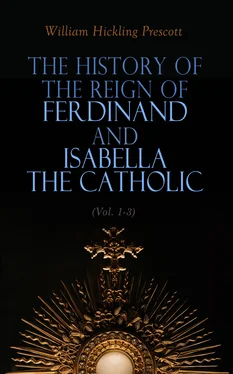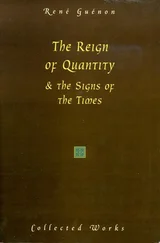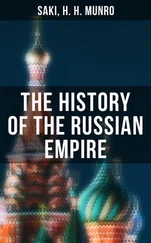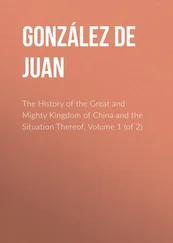[51] Asso y Manuel, Instituciones, p. 26.—Sempere, Histoire des Cortès, chap. 4.—The incensed nobles quitted the cortes in disgust, and threatened to vindicate their rights by arms, on one such occasion, 1176. Mariana, Hist. de España, tom. i. p. 644. See also tom. ii. p. 176.
[52] Idem auctores, ubi supra.—Prieto y Sotelo, Historia del Derecho Real de España, (Madrid, 1738,) lib. 2, cap. 23; lib. 3, cap. 8.
[53] Siete Partidas, (ed. de la Real Acad., Madrid, 1807,) part. 4, tit. 25, ley 11. On such occasions they sent him a formal defiance by their king at arms. Mariana, Hist. de España, tom. i. pp. 768, 912.
[54] Ibid., tom. i. pp. 707, 713.
[55] The forms of this solemnity may be found in Mariana, Hist. de España, tom. i. p. 907.
[56] Marina, Ensayo, p. 128.
[57] John I., in 1390, authorized appeals from the seignorial tribunals to those of the crown. Ibid., tom. ii. p. 179.
[58] The nature of these dignities is explained in Salazar de Mendoza, Monarquía, tom. i. pp. 155, 166, 203.
[59] From the scarcity of these baronial residences, some fanciful etymologists have derived the familiar saying of "Châteaux en Espagne." See Bourgoanne, Travels in Spain, tom. ii. chap. 12.
[60] Mariana, Hist. de España, tom. i. p. 910.
[61] Crónica de Don Alvaro de Luna, (ed. de la Acad. Madrid, 1784,) App. p. 465.
[62] Guzman, Generaciones y Semblanzas, (Madrid, 1775,) cap. 84.—His annual revenue is computed by Perez de Guzman, at 100,000 doblas of gold; a sum equivalent to 856,000 dollars at the present day.
[63] The former of these two sums is equivalent to $438,875, or £91,474 sterling; and the latter to $526,650, or £109,716, nearly. I have been guided by a dissertation of Clemencin, in the sixth volume of the Memorias de la Real Academia de la Historia, (Madrid, 1821, pp. 507–566,) in the reduction of sums in this History. That treatise is very elaborate and ample, and brings under view all the different coins of Ferdinand and Isabella's time, settling their specific value with great accuracy. The calculation is attended with considerable difficulty, owing to the depreciation of the value of the precious metals, and the repeated adulteration of the real . In his tables, at the end, he exhibits the commercial value of the different denominations, ascertained by the quantity of wheat (as sure a standard as any), which they would buy at that day. Taking the average of values, which varied considerably in different years of Ferdinand and Isabella, it appears that the ducat, reduced to our own currency, will be equal to about eight dollars and seventy-seven cents, and the dobla to eight dollars and fifty-six cents.
[64] The ample revenues of the Spanish grandee of the present time, instead of being lavished on a band of military retainers, as of yore, are sometimes dispensed in the more peaceful hospitality of supporting an almost equally formidable host of needy relations and dependants. According to Bourgoanne (Travels in Spain, vol. 1. chap. 4), no less than 3000 of these gentry were maintained on the estates of the duke of Arcos, who died in 1780.
[65] Mendoza records the circumstance of the head of the family of Ponce de Leon, (a descendant of the celebrated marquis of Cadiz,) carrying his son, then thirteen years old, with him into battle; "an ancient usage," he says, "in that noble house." (Guerra de Granada, (Valencia, 1776,) p. 318.) The only son of Alfonso VI. was slain, fighting manfully in the ranks, at the battle of Ucles, in 1109, when only eleven years of age. Mariana, Hist. de España, tom. i. p. 565.
[66] The northern provinces, the theatre of this primitive independence, have always been consecrated by this very circumstance, in the eyes of a Spaniard. "The proudest lord," says Navagiero, "feels it an honor to trace his pedigree to this quarter." (Viaggio, fol. 44.) The same feeling has continued, and the meanest native of Biscay, or the Asturias, at the present day, claims to be noble; a pretension, which often contrasts ridiculously enough with the humble character of his occupation, and has furnished many a pleasant anecdote to travellers.
[67] An elaborate dissertation, by the advocate Don Alonso Carillo, on the pre-eminence and privileges of the Castilian grandee, is appended to Salazar de Mendoza's Origen de las Dignidades Seglares de Castilla, (Madrid, 1794.) The most prized of these appears to be that of keeping the head covered in the presence of the sovereign; "prerogativa tan ilustre," says the writer, "que ella sola imprime el principal caracter de la Grandeza. Y considerada por sus efectos admirables , ocupa dignamente el primero lugar." (Discurso 3.) The sentimental citizen Bourgoanne, finds it necessary to apologize to his republican brethren, for noticing these "important trifles." Travels in Spain, vol. i. chap. 4.
[68] "Los llamaron fijosdalgo, que muestra a tanto como fijos de bien." (Siete Partidas, part. 2, tit. 21.) "Por hidalgos se entienden los hombres escogidos de buenos lugares é con algo ." Asso y Manuel, Instituciones, pp. 33, 34.
[69] Recop. de las Leyes, lib. 6, tit. 1, leyes 2, 9; tit. 2, leyes 3, 4, 10; tit. 14, leyes 14, 19.—They were obliged to contribute to the repair of fortifications and public works, although, as the statute expresses it, "tengan privilegios para que sean essentos de todos pechos."
[70] The knight was to array himself in light and cheerful vestments, and, in the cities and public places his person was to be enveloped in a long and flowing mantle, in order to impose greater reverence on the people. His good steed was to be distinguished by the beauty and richness of his caparisons. He was to live abstemiously, indulging himself in none of the effeminate delights of couch or banquet. During his repast, his mind was to be refreshed with the recital, from history, of deeds of ancient heroism; and in the fight he was commanded to invoke the name of his mistress, that it might infuse new ardor into his soul, and preserve him from the commission of unknightly actions. See Siete Partidas, part, 2, tit. 21, which is taken up with defining the obligations of chivalry.
[71] See Fuero Juzgo, lib. 3, which is devoted almost exclusively to the sex. Montesquieu discerns in the jealous surveillance, which the Visigoths maintained over the honor of their women, so close an analogy with oriental usages, as must have greatly facilitated the conquest of the country by the Arabians. Esprit des Loix, liv. 14, chap. 14.
[72] Warton's expression. See vol. i. p. 245, of the late learned edition of his History of English Poetry, (London, 1824.)
[73] See the "Passo Honroso" appended to the Crónica de Alvaro de Luna.
[74] The present narrative will introduce the reader to more than one belligerent prelate, who filled the very highest post in the Spanish, and, I may say, the Christian Church, next the papacy. (See Alvaro Gomez, De Rebus Gestis a Francisco Ximenio Cisnerio, (Compluti, 1569,) fol. 110 et seq.) The practice, indeed, was familiar in other countries, as well as Spain, at this late period. In the bloody battle of Ravenna, in 1512, two cardinal legates, one of them the future Leo X., fought on opposite sides. Paolo Giovo, Vita Leonis X., apud "Vitae Illustrium Virorum," (Basiliae, 1578,) lib. 2.
[75] The contest for supremacy, between the Mozarabic ritual and the Roman, is familiar to the reader, in the curious narrative extracted by Robertson from Mariana, Hist. de España, lib. 9, cap. 18.
[76] Siete Partidas, part. 1, tit. 6.—Florez, España Sagrada, tom. xx. p. 16.—The Jesuit Mariana appears to grudge this appropriation of the "sacred revenues of the Church" to defray the expenses of the holy war against the Saracen. (Hist. de España, tom. i. p. 177.) See also the Ensayo, (nos. 322–364,) where Marina has analyzed and discussed the general import of the first of the Partidas.
Читать дальше












